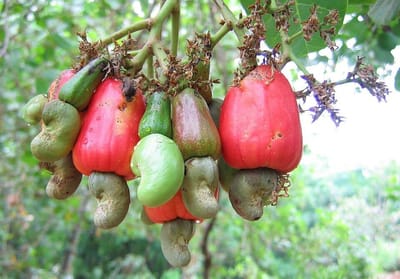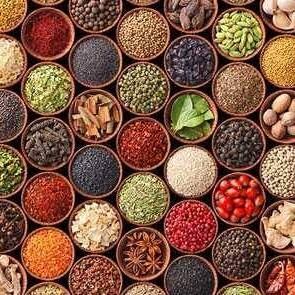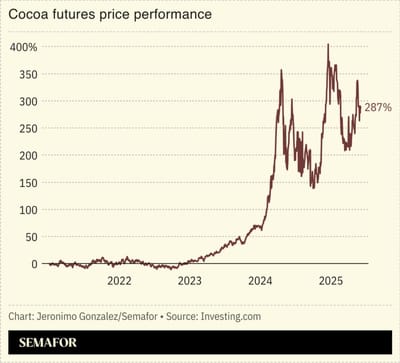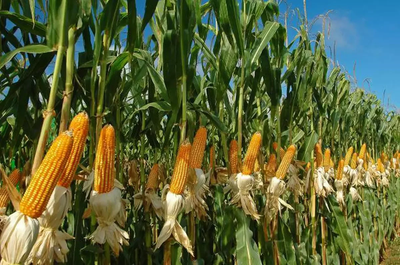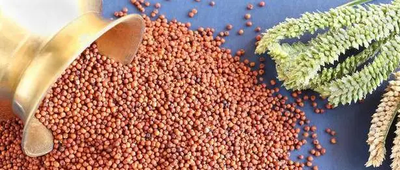MAIZE
Bionema’s RootVita SP Increases Maize Head Size by 50% in South African Field Trials
Read MoreRaw sugar futures on ICE rose to a two-month high on Monday as a fall in production in India helped to tighten global supplies, while arabica coffee prices extended their decline from a record peak set earlier this month
Read MoreSunyani, Ghana – The Bono Regional Minister, Joseph Addae-Akwaboah, has called on stakeholders across Africa’s cashew sector to develop strategic, innovative solutions to unlock the full potential of the continent’s cashew value chain.
Read MoreSouth Africa’s agricultural exports rose by 10% in the first quarter of 2025, reaching $3.36 billion (R60.2 billion), according to the Agricultural Business Chamber of South Africa (Agbiz). The growth was largely attributed to improved port operations and a significant uptick in exports to the United States, which saw a 14% increase year-on-year, totaling $202 million.
Read MoreSouth Africa’s avocado export season remains on target, with shipments progressing steadily and the first successful sales to China marking a significant milestone for the industry. Despite recent price pressures in traditional markets, industry leaders remain optimistic about long-term growth driven by new market access and strategic promotion.
Read MoreAbidjan, Côte d’Ivoire – In a historic move to modernize agricultural trade in West Africa, Côte d’Ivoire has officially launched a regional commodities exchange, marking a significant shift from informal markets to a regulated, transparent trading system. Within the first 10 minutes of operation, approximately $54,000 worth of raw cashews, kola nuts, and maize were successfully traded, according to reports from Radio France Internationale (RFI).
Read MoreAs Africa confronts the challenge of feeding a rapidly growing population, the focus is shifting from simply increasing food production to doing so sustainably and responsibly.
Read MoreConsumption Africa's Consumption of Wheat Gluten In 2024, consumption of wheat gluten decreased by -37.9% to 10K tons, falling for the third consecutive year after two years of growth. Overall, consumption, however, saw a relatively flat trend pattern. As a result, consumption reached the peak volume of 42K tons. From 2022 to 2024, the growth of the consumption remained at a somewhat lower figure. The value of the wheat gluten market in Africa declined markedly to $21M in 2024, reducing by -36.2% against the previous year.
Read MoreThe size of the sesame oil market in Africa reduced modestly to $721M in 2024, remaining constant against the previous year. This figure reflects the total revenues of producers and importers (excluding logistics costs, retail marketing costs, and retailers' margins, which will be included in the final consumer price). Overall, consumption saw a relatively flat trend pattern. The level of consumption peaked at $929M in 2017; however, from 2018 to 2024, consumption stood at a somewhat lower figure.
Read MoreThe planned export is part of NFRA’s broader strategy to offload up to 1.1 million tonnes of maize from the country’s strategic grain reserves, while simultaneously ensuring national food security. The DRC is the primary destination market for the bulk of the maize, underlining the growing agricultural trade ties between the two neighbours.
Read More- Growing Demand: The demand for millet in Africa is increasing due to its nutritional benefits, gluten-free properties, and drought resistance. Countries like South Africa, Kenya, and Nigeria are driving this growth.- Market Size: The global millet market size was estimated at $36.94 billion in 2023 and is projected to reach $55.71 billion by 2030, growing at a CAGR of 6.2%. Africa is expected to play a significant role in this growth.-
Read MoreTunisia’s recurring soft wheat tenders aren’t just a local story—they’re a bellwether for global agricultural markets. As the North African nation scrambles to secure its wheat supply against a backdrop of drought, domestic production shortfalls, and geopolitical shifts, investors are being handed a unique opportunity to capitalize on structural demand trends in global commodities.Tunisia’s wheat imports have surged in recent years, with the 2024/25 season projecting a staggering 1.8 million metric tons of imports to meet domestic consumption of 2.89 million metric tons. This dependency isn’t a temporary fix—it’s a structural shift driven by three key factors: 1. Domestic Production Constraints: Tunisia’s wheat output remains stubbornly low, averaging 1.25 million metric tons annually. Droughts and soil salinity issues in key growing regions like Kairouan and Sousse have made self-sufficiency a distant dream.
Read More

